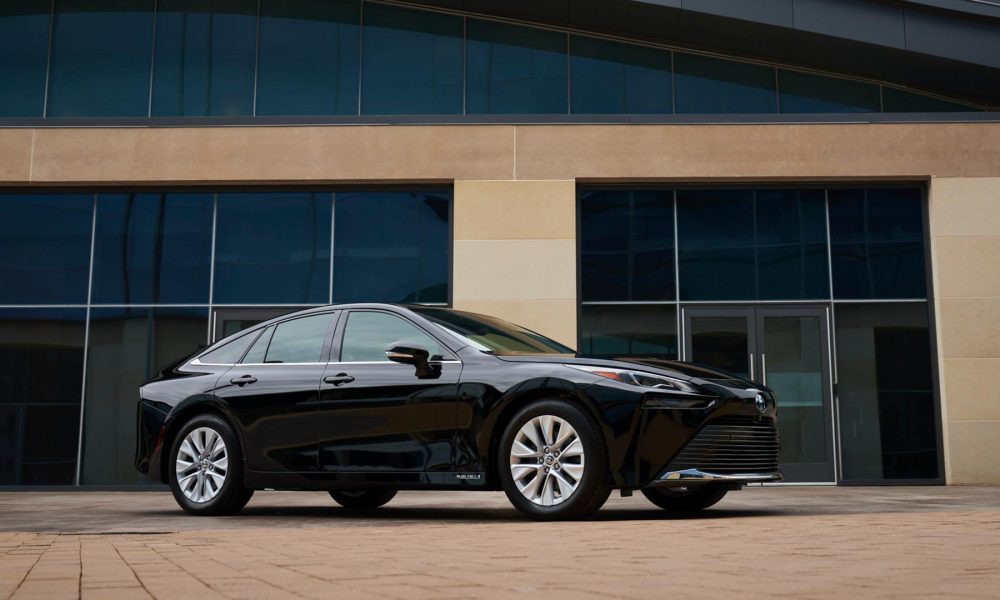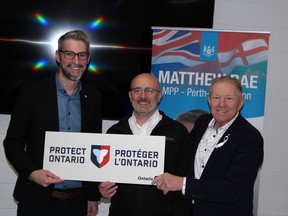Science
Toyota Faces Lawsuit as Hydrogen Car Owners Demand Answers

The promise of a hydrogen-fueled future has quickly turned into a troubling reality for numerous car owners in California. Drivers of Toyota’s flagship fuel cell vehicle, the Mirai, have launched a class action lawsuit against the automaker, along with other significant players, claiming they were misled about the effectiveness and availability of the hydrogen fueling network. As infrastructure falters and hydrogen prices soar, many Mirai owners are left making payments on vehicles they can no longer use.
Legal Action Against Toyota and Partners
One of the plaintiffs, Sam D’Anna, purchased his $75,000 Mirai in July 2022, but soon faced significant challenges. After barely driving the vehicle, he discovered that the nearest hydrogen fueling station was offline, forcing him to travel nearly 25 miles to refuel. Despite the car’s EPA-estimated range of 402 miles, his fuel gauge was nearly empty, leaving him with only 22 miles of range. D’Anna, now part of the legal action, describes the experience as disheartening, stating, “This is bad. My heart was dropping into my stomach.”
The lawsuit, filed in Los Angeles Superior Court, accuses Toyota, hydrogen station operator FirstElement Fuel, the Hydrogen Fuel Cell Partnership, and California Governor Gavin Newsom of fraud and negligence. The plaintiffs argue that Toyota knowingly sold vehicles reliant on a failing fueling ecosystem, leaving buyers trapped in loans for vehicles that are difficult to use.
D’Anna’s Mirai now sits unused under a tarp, and he continues to pay nearly $1,100 monthly on the vehicle, in addition to payments for a replacement Ford F-150 hybrid he bought in 2023.
The Failures of Hydrogen Infrastructure
California’s ambitious vision for hydrogen vehicles once appeared feasible, with the state investing tens of millions of dollars to establish a network of fueling stations. Major automakers like Toyota, Hyundai, and Honda introduced attractive zero-emission vehicles powered by hydrogen. Drivers could theoretically refuel in minutes and produce only water vapor, a compelling alternative to electric vehicles, which were still emerging.
Yet, the deployment of hydrogen stations has lagged significantly behind the marketing promises. Currently, California operates approximately 50 hydrogen fueling stations, according to the Hydrogen Fuel Cell Partnership. In a significant setback, Shell exited the market in 2024, closing multiple locations.
Issues at operating stations have compounded the problem. Even when available, fueling stations often suffer from maintenance problems and inconsistent supply. Hydrogen prices have tripled; what once cost around $70 to fill now approaches $200, highlighting the growing frustration among users.
Patrick Peterson, an automotive expert at GoodCar.com, commented, “The issue isn’t the tech, it’s everything around it. The infrastructure just isn’t ready.” He noted that while electric vehicles have gained consumer trust, hydrogen technology still faces significant skepticism.
One Mirai owner, Ricky Yap, purchased his 2016 model in 2020 for $16,000, which included a prepaid fuel card. Initially, he found the fueling process manageable, but as stations closed, he faced long waits and soaring prices, leading him to abandon the vehicle altogether.
The lawsuit alleges that Toyota and its partners misled consumers about the hydrogen ecosystem’s reliability. Many owners were motivated by environmental concerns and incentives, but the resale value of hydrogen vehicles has plummeted. One plaintiff, Parita Shah, revealed that her dealership offered only $2,000 for her Mirai, originally valued at $36,000, after local stations shut down shortly after her purchase.
The mounting frustration among Mirai owners culminated in a demonstration in Los Angeles in July 2025. Protesters voiced their grievances with slogans such as “Mirai is a Lie” and “Toyota Made a Big Mistake.” Attorney Jason Ingber, representing the plaintiffs, accused Toyota of knowingly selling products reliant on a failing infrastructure.
In response to the backlash, Toyota has acknowledged the fueling issues and ceased sales of new Mirais in the Sacramento area for over a year. The company has stated it is “working with affected Mirai customers to identify ways to help them on a case-by-case basis.” While rental cars and service credits have been offered, plaintiffs argue these remedies are insufficient. Shah noted that the rental process is cumbersome, requiring her to exchange vehicles every 25 days while still paying for her Mirai.
Hyundai has similarly provided short-term rental options for its hydrogen-fueled Nexo SUV, which faced a recall for potential hydrogen leaks in late 2024.
As of now, California has sold nearly 18,000 hydrogen-powered vehicles since 2012, with Toyota accounting for the majority. Nonetheless, the momentum for hydrogen adoption has slowed considerably, in stark contrast to the millions of battery electric and hybrid vehicles now on the road.
Government support for hydrogen infrastructure has also diminished. The state initially committed about $20 million annually for development, but this figure has fallen to $15 million, and funding is no longer exclusively for light-duty stations. Former state senator and Mirai owner Josh Newman expressed dissatisfaction with the current state of support, highlighting that the goal of 200 operational hydrogen stations by 2025 remains unfulfilled.
Alex Black, Chief Marketing Officer at EpicVIN, emphasized that the issues surrounding hydrogen extend beyond infrastructure. “Hydrogen cars do have an image problem right now,” he stated, noting that public perception plays a crucial role in demand and investment.
The situation serves as a cautionary tale for the future of hydrogen technology in personal transportation. Although the concept presents clear advantages for specific applications, the current reality suggests that consumer trust in hydrogen vehicles remains fragile. For those who invested early in the vision of hydrogen mobility, the experience has turned disheartening.
As Black concluded, “People want something they can rely upon, and they want it to be easy. Hydrogen is not quite there yet.” For Mirai owners facing ongoing payments on vehicles that sit idle, the dream of a hydrogen-powered future appears increasingly distant.
-

 Politics4 weeks ago
Politics4 weeks agoSecwepemc First Nation Seeks Aboriginal Title Over Kamloops Area
-

 World5 months ago
World5 months agoScientists Unearth Ancient Antarctic Ice to Unlock Climate Secrets
-

 Entertainment5 months ago
Entertainment5 months agoTrump and McCormick to Announce $70 Billion Energy Investments
-

 Science5 months ago
Science5 months agoFour Astronauts Return to Earth After International Space Station Mission
-

 Lifestyle5 months ago
Lifestyle5 months agoTransLink Launches Food Truck Program to Boost Revenue in Vancouver
-

 Technology3 months ago
Technology3 months agoApple Notes Enhances Functionality with Markdown Support in macOS 26
-

 Lifestyle3 months ago
Lifestyle3 months agoManitoba’s Burger Champion Shines Again Amid Dining Innovations
-

 Top Stories2 months ago
Top Stories2 months agoUrgent Update: Fatal Crash on Highway 99 Claims Life of Pitt Meadows Man
-

 Politics4 months ago
Politics4 months agoUkrainian Tennis Star Elina Svitolina Faces Death Threats Online
-

 Sports5 months ago
Sports5 months agoSearch Underway for Missing Hunter Amid Hokkaido Bear Emergency
-

 Politics5 months ago
Politics5 months agoCarney Engages First Nations Leaders at Development Law Summit
-

 Technology5 months ago
Technology5 months agoFrosthaven Launches Early Access on July 31, 2025





















